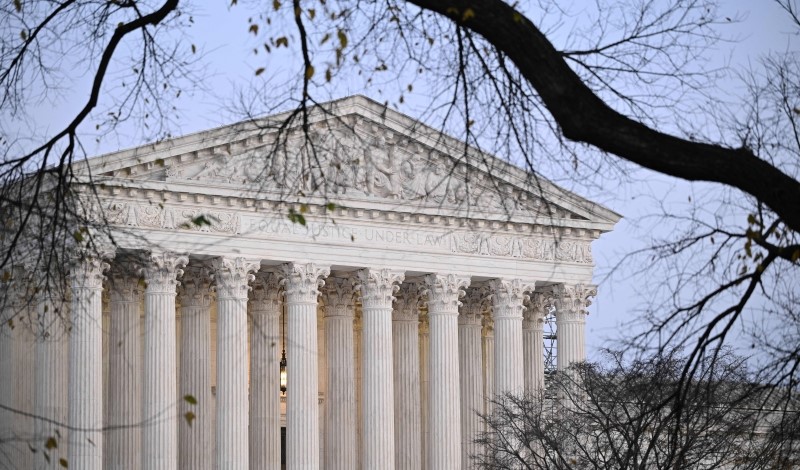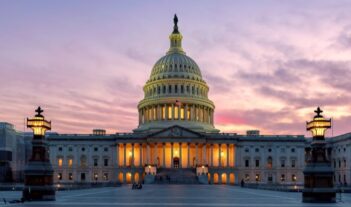
The Court rules that the Seventh Amendment applies to some SEC enforcement actions, but questions remain.
In Securities and Exchange Commission v. Jarkesy, the U.S. Supreme Court held that when the U.S. Securities and Exchange Commission (SEC) brings an enforcement action “seeking civil penalties for alleged securities fraud,” the defendants in such an action are “are entitled to a jury trial in an Article III court.” The Court therefore held the SEC’s administrative adjudication of such securities fraud claims unconstitutional in Jarkesy.
In Jarkesy, the SEC had brought its fraud enforcement action before an SEC administrative law judge (ALJ). The ALJ conducted an evidentiary hearing without use of a jury and issued an initial decision of the matter. The SEC reviewed the ALJ’s initial decision and issued a final order in 2020. The SEC found that George Jarkesy, Jr. and an investment adviser firm that he managed, Patriot28, violated antifraud provisions of federal securities laws.
As the Supreme Court recounted, the SEC’s order imposed an array of remedies: “a civil penalty of $300,000,” disgorgement of profits from the fraud, a cease-and-desist order, and a ban on Jarkesy’s future involvement in various investment-related activities.
Jarkesy and Patriot28 petitioned the U.S. Court of Appeals for the Fifth Circuit for review. A divided Fifth Circuit panel held that the SEC’s adjudication of the securities fraud claims against Jarkesy and Patriot28 was unconstitutional for three alternative reasons: Petitioners were entitled to a jury trial under the U.S. Constitution’s Seventh Amendment; “Congress unconstitutionally delegated legislative power to the SEC by failing to give the SEC an intelligible principle” for deciding whether to pursue enforcement before a district court or in an SEC adjudication; and “the statutory removal restrictions for SEC ALJs are unconstitutional.”
The Fifth Circuit determined that the first two holdings provided independent bases for vacating the SEC’s judgment but, when considering the third defect, declined to decide “whether vacating would be appropriate based on that defect alone.”
The Fifth Circuit’s Seventh Amendment ruling reflected its conclusion that an action for securities fraud “seeking civil penalties” under federal statutes is a matter arising “‘at common law’ under the Seventh Amendment” and is not a matter of public right.
The determination that the matter was not one of public right was crucial because, under the Supreme Court’s so-called public rights doctrine, a matter of public right may be adjudicated by a non-Article III tribunal and, under a corollary to that doctrine, adjudication of such a matter by an administrative agency is exempt from the Seventh Amendment’s jury trial requirement.
The Supreme Court granted certiorari on three questions corresponding to the Fifth Circuit’s three holdings of unconstitutionality on Seventh Amendment, nondelegation, and removability grounds.
In an opinion by Chief Justice John G. Roberts, the Supreme Court affirmed the Fifth Circuit’s ruling that the SEC proceedings violated the Seventh Amendment. More specifically, the Court found that the Seventh Amendment generally applies to the adjudication of claims for civil penalties.
The Court also held that the matter at hand was not one of public right because federal securities fraud causes of action “are modeled on common law fraud” and the “object” of these causes of action, even when brought by the SEC, “is to regulate transactions between private individuals interacting in a pre-existing market.”
The Court did not resolve the nondelegation and removability questions because, in the Court’s words, “the answer to the jury trial question resolves this case.”
Justice Sonia Sotomayor dissented in an opinion joined by Justices Elena Kagan and Ketanji Brown Jackson. Justice Sotomayor’s dissent contended that the Court’s decision on the Seventh Amendment question “upends longstanding precedent.” The dissent also criticized the decision as an improper “power grab.” The dissent asserted: “In telling Congress that it cannot entrust certain public-rights matters to the Executive because it must bring them first into the Judiciary’s province, the majority oversteps its role and encroaches on Congress’s constitutional authority.”
In contrast, in a concurring opinion joined by Justice Clarence Thomas, Justice Neil Gorsuch emphasized his view that the SEC proceedings in Jarkesy violated not only the Seventh Amendment, but also Article III and the Fifth Amendment’s Due Process Clause.
Before focusing further on the Seventh Amendment question, I note that the Court’s explanation for declining to reach the nondelegation and removability questions seems less than fully satisfactory.
The Court’s and Fifth Circuit’s Seventh Amendment rulings were ostensibly anchored in the SEC’s having sought civil penalties. As noted earlier, however, the SEC had also ordered equitable remedies. Consequently, if the Court had reviewed and overruled the Fifth Circuit’s nondelegation and removability holdings, the Court’s affirmance of the Fifth Circuit only on the Seventh Amendment question would presumably have left the SEC with an option, on remand, of dropping its pursuit of civil penalties and resuming its prosecution of Jarkesy and Patriot28 in agency proceedings in which only equitable remedies would be at issue. This option now appears precluded by the Court’s having left the Fifth Circuit’s nondelegation and ALJ-removability holdings in place by default.
Before continuing with analysis of the Court’s decision, I should confess to more than a casual interest in this case. For the Court’s consideration, Professor Thomas H. Lee of Fordham Law and I coauthored an amicus brief focused on the Seventh Amendment question and, more particularly, that question’s public rights doctrine aspect. Our brief contended that, under the Court’s pre-existing precedents, “the Court should reject the present jury-rights challenge in accordance with the conclusion that SEC enforcement actions for civil penalties are presumptively matters of public right.” The Court rather flatly disagreed with our contention, quoting a plurality opinion from 1982 to emphasize that, “even with respect to matters that arguably fall within the scope of the ‘public rights’ doctrine, the presumption is in favor of Art. III courts.”
Given this background, it may be unsurprising that I believe Jarkesy could mark a watershed in federal administrative law. As Justice Sotomayor stated without contradiction in her dissent, “for the very first time,” the Court has held “that Congress violated the Constitution by authorizing a federal agency to adjudicate a statutory right that inheres in the government in its sovereign capacity, also known as a public right.”
As Justice Sotomayor further observed, the Court’s 1977 decision in Atlas Roofing v. Occupational Health and Safety Review Commission had long appeared to broadly bless administrative adjudication of “civil-penalty claims belonging to the government.” One apparent result was that Congress had “enacted more than 200 statutes authorizing dozens of agencies to impose civil penalties for violation of statutory obligations.”
The Court’s Jarkesy decision might be a conceptual watershed as well as a practical one. Chief Justice Roberts’ opinion for the Court avoided any substantial reliance on the oft-cited distinction between public and private rights articulated by the Court’s 1932 opinion in Crowell v. Benson.
In Crowell, the Court characterized a matter of private right as one “of the liability of one individual to another under the law as defined.” Correspondingly, the Crowell Court described a matter of public right as one “between the government and persons subject to its authority in connection with the performance of the constitutional functions of the executive and legislative departments.” In Jarkesy, however, the Court brushed past the point that the claim pursued by the SEC was one inhering in the government, rather than private parties.
Instead, with respect to the public rights doctrine, the Court declared that “what matters is the substance of the suit, not where it is brought, who brings it, or how it is labeled.” For the Jarkesy Court, the determinative points appear to have been that the statutory causes of action at issue were “modeled on common law fraud” and that a civil penalty is a legal remedy, rather than an equitable one.
Importantly, this distinction between legal and equitable remedies might ultimately prove insignificant for the constitutional status of much agency adjudication. Portions of the Court’s reasoning in Jarkesy suggest that, if the question presented to the Court had been one of whether there had been an Article III violation, as opposed to a Seventh Amendment violation, the distinction between legal and equitable remedies would not have mattered.
For example, Chief Justice Roberts’ opinion for the Court highlighted the following quotation from the Court’s 1856 decision in Murray’s Lessee v. Hoboken Land & Improvement Co.: “To avoid misconstruction upon so grave a subject, we think it proper to state that we do not consider Congress can either withdraw from judicial cognizance any matter which, from its nature, is the subject of a suit at the common law, or in equity, or admiralty.”
Hence, suggestion that Jarkesy will not affect administrative agencies’ capacities to issue equitable relief, such as cease-and-desist orders, might be off the mark. Recognition that the Court’s reasoning also encompasses equity could provide the real explanation for the Court’s assertion that its decision on the Seventh Amendment question “resolves this case” despite the SEC’s ordering of remedies beyond civil penalties.
Nonetheless, Chief Justice Roberts’ opinion for the Court provides some off-ramps for limiting Jarkesy’s implications. First, the opinion does not appear to preclude the possibility that parties could consent to SEC adjudication of a securities fraud claim. Significantly, in 2015, the Court held that parties may “knowingly and voluntarily consent to adjudication by a [non-Article III] bankruptcy judge” even when the parties are “constitutionally entitled to an Article III adjudication” of a claim in bankruptcy.
Second, Chief Justice Roberts’ opinion criticized but did not overrule Atlas Roofing. In that case, the Court upheld the constitutionality of adjudication by the Occupational Safety and Health Review Commission (OSHRC) that had ordered the payment of civil penalties for violations of workplace safety standards. The Court held that such OSHRC adjudication did not violate the Seventh Amendment right to a trial by jury because the matter was one of public right that Congress could designate for administrative adjudication.
The opinion for the Jarkesy Court distinguished the causes of action in Atlas Roofing as claims under the Occupational Safety and Health Act that brought “no common law soil with them” and were analogous to claims for violation of “a detailed building code.” In like vein, the Court’s opinion emphasized the specificity of Jarkesy’s holding to “fraud claims.”
A third potential off-ramp could involve reconciliation of the Court’s newly articulated approach to the public rights doctrine with the traditional “petty offense” doctrine. Previously, the Court has acknowledged a long tradition of juryless adjudication of a range of legal violations punishable by limited terms of imprisonment or fines. A 1926 article by Felix Frankfurter and Thomas Corcoran chronicled “a clear and unbroken practice … for two centuries preceding the Constitution” under which many offenses, “compendiously characterized as ‘petty,’” were “customarily tried solely by magistrates” in England, the colonies, and the young states.
According to Frankfurter and Corcoran’s account, this practice commonly proceeded with “no sharp distinction between different forms,” such as criminal versus civil, and regularly featured the imposition of penalties ranging from monetary fines to corporal punishment and imprisonment. This practice of adjudication by magistrates such as justices of the peace could be viewed as a precursor of at least some forms of adjudication by modern non-Article III tribunals.
In short, jurists and litigants will likely wrangle for years—even decades—over the extent to which the Court’s decision in Jarkesy signals the unconstitutionality of agency adjudication of enforcement actions outside the securities fraud context. Under Thomas v. Union Carbide Agricultural Products Inc., there might even be a residual question about the extent to which the Jarkesy holding applies to registered, as opposed to unregistered, entities in the securities law context.
What appears clear is that Jarkesy invites continued challenges to the constitutionality of administrative adjudication. The Court’s closing dictum that concentrating “the roles of prosecutor, judge, and jury in the hands of the Executive Branch … is the very opposite of the separation of powers that the Constitution demands” suggests that such challenges might succeed on grounds extending far beyond the Court’s existing precedents.
This essay is part of a series, titled The Supreme Court’s 2023-2024 Regulatory Term.




